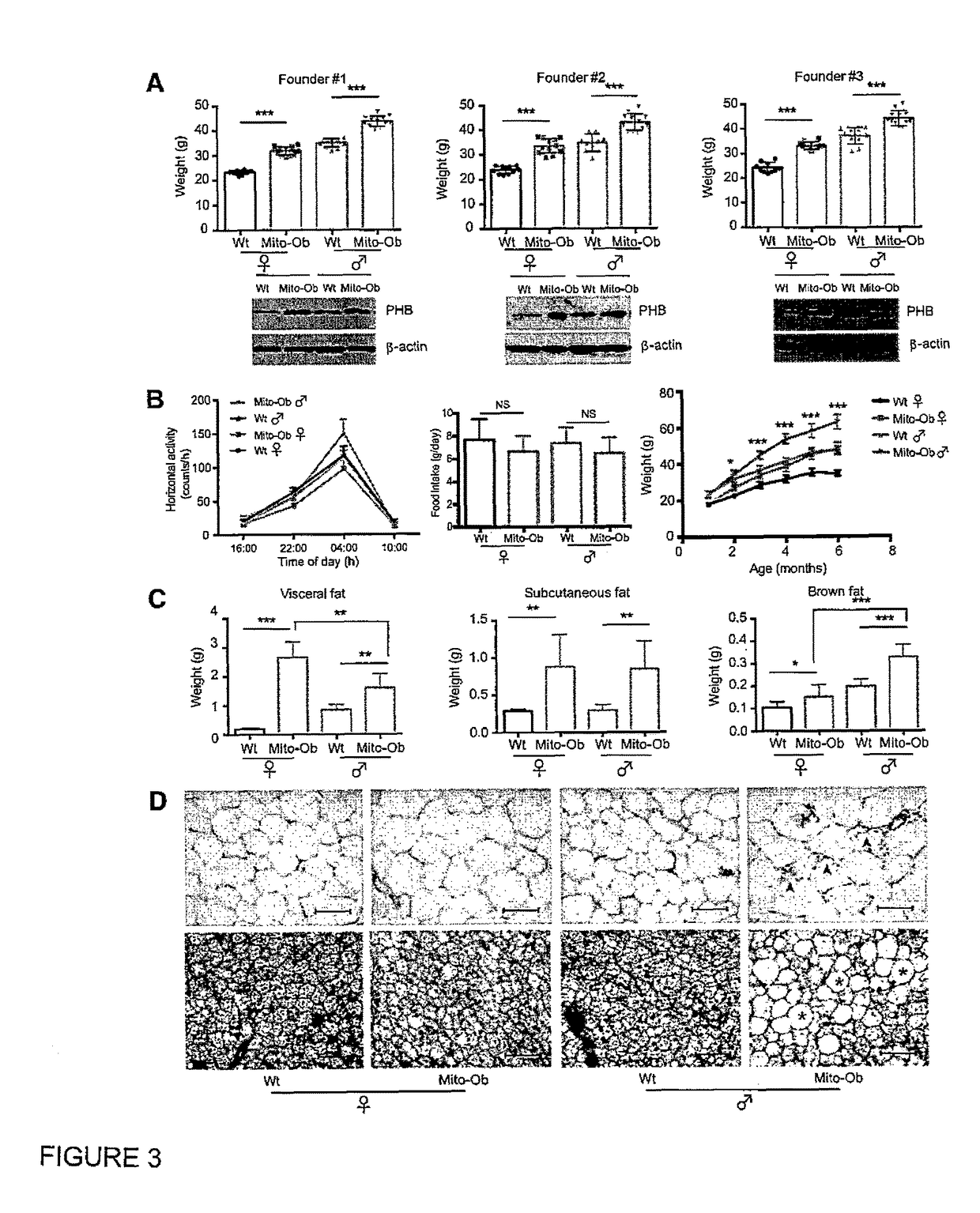Mito-Ob: a transgenic mouse model for obesity
a mouse model and obesity technology, applied in the field of mito-ob, can solve the problems of obesity as a significant health problem, obesity is associated with respiratory difficulties, chronic musculoskeletal problems, etc., and achieve the effect of increasing adipose tissue mass
- Summary
- Abstract
- Description
- Claims
- Application Information
AI Technical Summary
Benefits of technology
Problems solved by technology
Method used
Image
Examples
Embodiment Construction
[0017]Unless defined otherwise, all technical and scientific terms used herein have the same meaning as commonly understood by one of ordinary skill in the art to which the invention belongs. Although any methods and materials similar or equivalent to those described herein can be used in the practice or testing of the present invention, the preferred methods and materials are now described. All publications mentioned hereunder are incorporated herein by reference.
[0018]As discussed above, most of obese animal models currently used have been either selected through inbreeding or characterized following spontaneously arising mutations and are often associated with increased food intake and reduced energy expenditure (Shafrir and Ziv, 2009). Irrespective of the origin, obesity is characterized by increase in adipose tissue mass and involves corresponding changes in adipose tissue to synthesize and store excess fat. However, an obese animal model based on primary changes in adipose tis...
PUM
| Property | Measurement | Unit |
|---|---|---|
| mass | aaaaa | aaaaa |
| resistance | aaaaa | aaaaa |
| weight loss | aaaaa | aaaaa |
Abstract
Description
Claims
Application Information
 Login to View More
Login to View More - R&D
- Intellectual Property
- Life Sciences
- Materials
- Tech Scout
- Unparalleled Data Quality
- Higher Quality Content
- 60% Fewer Hallucinations
Browse by: Latest US Patents, China's latest patents, Technical Efficacy Thesaurus, Application Domain, Technology Topic, Popular Technical Reports.
© 2025 PatSnap. All rights reserved.Legal|Privacy policy|Modern Slavery Act Transparency Statement|Sitemap|About US| Contact US: help@patsnap.com



